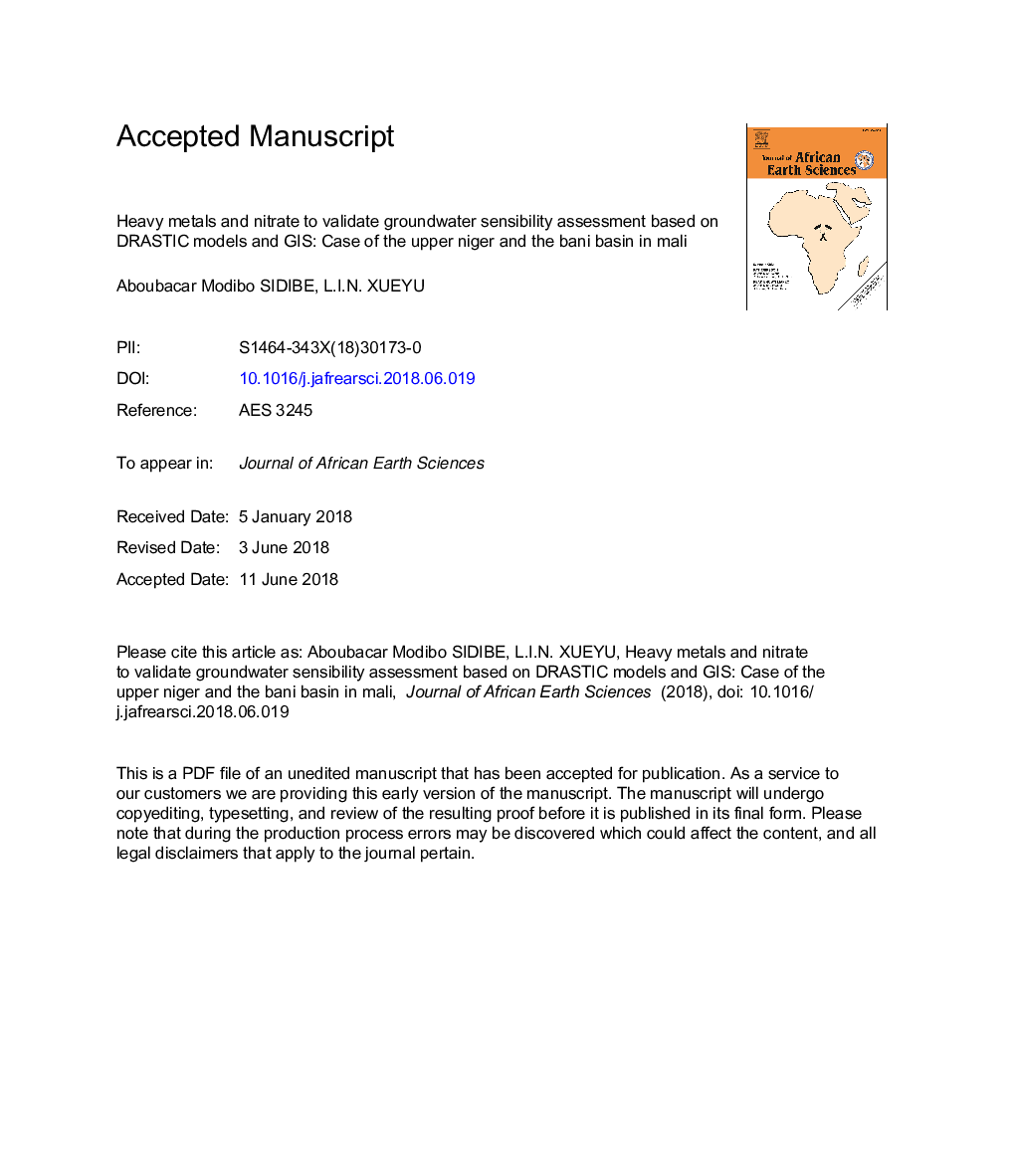| Article ID | Journal | Published Year | Pages | File Type |
|---|---|---|---|---|
| 8913346 | Journal of African Earth Sciences | 2018 | 29 Pages |
Abstract
The study area is located in the south of Mali and is the most populous part of the country with intense agricultural activities that use a huge amount of mineral fertilizers and pesticides. Mining is another booming industry within the area which is dominated by the proliferation of traditional gold panning where the use of certain heavy metals is inevitable hence resulting in the degradation of the groundwater quality. Groundwater is becoming increasingly vulnerable to pollution from the gold-panning activities. Assessment of the vulnerability of groundwater has become a useful tool for decision support in monitoring the pollution. This study uses vulnerability mapping as a basic tool for monitoring groundwater resources from pollution. It is based on the DRASTIC model for estimating the vulnerability of groundwater pollution in the Upper Niger and Bani Basins. The use of GIS in the model makes it possible to assess the vulnerability of groundwater by superimposing different spatially referenced hydrogeological parameters that affect groundwater contamination. The study focuses on the hydrogeological, hydrodynamic and physicochemical characteristics of over three thousand boreholes. Thirty samples from mining sites only were analyzed to determine presences of heavy metals in the groundwater. Vulnerability analysis makes it possible to understand the role played by heavy metals and nitrates in monitoring the pollution. The results obtained exhibit that 6.43% of the surface has a very high vulnerability; 52.12% are of high vulnerability; 36.89% are of moderate vulnerability; 4.57% are of low vulnerability, and 0.004% are of very low vulnerability. The large variation of the vulnerability index is observed in the elimination of depth layers (mean variation indexâ¯=â¯3.09%), the lower the depth, the greater the vulnerability. The vadose zone with an average index change of 0.52% has the least effect on the overall change in the vulnerability index. Validation of the vulnerability map is done using the nitrate map indicating that maximum concentrations of 92.65â¯mg/l is observed in the very high vulnerability class. The concentrations of heavy metals such as cyanide, cadmium, arsenic, lead, and chromium is also used in the validation. Levels of lead (0.702â¯mg/l), chromium (0.0588â¯mg/l) and arsenic (0.54â¯mg/l) are above the global standard whereas cadmium (0.0013â¯mg/l) and cyanide (0.006â¯mg/l) are below international standards. The presence of these metals in very small amounts in groundwater samples indicates contamination. The use of GIS allows interpolation from the data with Geostatistical methods and extraction of zonal statistics for a better interpretation of the results.
Related Topics
Physical Sciences and Engineering
Earth and Planetary Sciences
Geology
Authors
Aboubacar Modibo Sidibe, Lin Xueyu,
